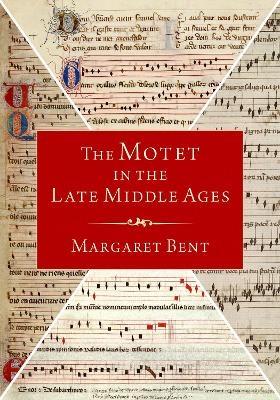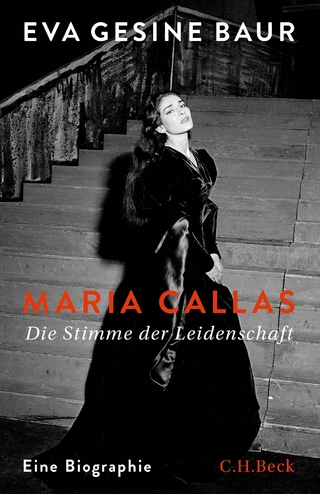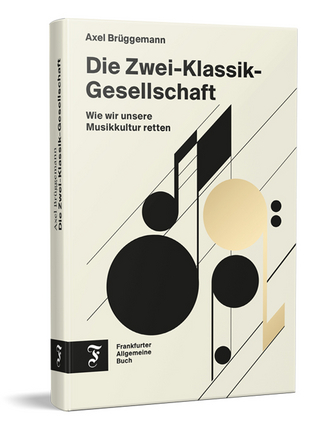
The Motet in the Late Middle Ages
Oxford University Press Inc (Verlag)
978-0-19-006377-1 (ISBN)
In this book, Bent examines the words and music of motets from many different angles: foundational verbal quotations and pre-existent chant excerpts and their contexts, citations both of words and music from other compositions, function, dating, structure, theory, and number symbolism. Individual studies of these original creations tease out a range of strategies, ingenuity, playfulness, striking juxtapositions, and even subversion. Half of the thirty-two chapters consist of new material; the other half are substantially revised and updated versions of previously published articles and chapters, organized into seven Parts. With new analyses of text and music together, new datings, new attributions, and new hypotheses about origins and interrelationships, Bent uncovers little-explored dimensions, provides a window into the craft and thought processes of medieval composers, and opens up many directions for future work.
Margaret Bent is an emeritus Fellow of All Souls College, Oxford, and a Fellow of several international societies and academies. Between 1975 and 1992 she taught at Brandeis and Princeton universities and served as President of the American Musicological Society. Her numerous publications range over English and continental music, repertories, notation, and theory of the fourteenth to sixteenth centuries. Her editorial publications include critical editions of Dunstaple, Ciconia, English masses, and a Rossini opera. Her many honours include the C.B.E. and three honorary degrees. In 2018, she received the inaugural Adler prize of the International Musicological Society.
List of Illustrations
List of Tables
List of Music Examples
List of Sound Clips
List of Abbreviations
Introduction
PART I. COMPOSITIONAL TECHNIQUES
1. Theoretical and Terminological Issues
2. What is Isorhythm?
PART II. THE MARIGNY MOTETS, BEYOND FAUVEL, AND VITRY
3. Fauvel and Marigny: Which Came First?
4. Tribum que non abhorruit/Quoniam secta latronum/Merito hec patimur and its 'Quotations'; and Garrit gallus/In nova
Appendix: Commentary to Tribum/Quoniam; Commentary to Garrit/In nova
5. Aman novi/Heu Fortuna/Heu me
6. Floret/Florens: Intended for Fauvel?
7. Related Manuscripts, Related Motets; Vitry
8. Vos quid admiramini/Gratissima virginis species/Gaude gloriosa
PART III. MACHAUT
9. Words and Music in Machaut's Motet 9
10. Deception, Exegesis and Sounding Number in Machaut's Motet 15
11. The 'Harmony' of the Machaut Mass
12. Machaut's Motet 10 and its Interconnections
13. Machaut's Motet 18: Bone pastor Guillerme/Bone pastor, qui pastores/Bone pastor
14. Text-Music Relationships in Machaut's Motets 4 and 8
PART IV. MUSICORUM COLLEGIUM: THE MUSICIAN MOTETS
15. Apollinis eclipsatur, its Progeny and their Sources
16. Apollinis eclipsatur/Zodiacum signis/In omnem terram and Later Versions with Added Parts
Appendix: Commentaries to Web Transcriptions for the Pieces with Multiple Sources
17. Musicalis sciencia/Sciencie laudabili; the Musicians Named in Apollinis and Musicalis
18. Musicorum collegio/In templo Dei/Auete
19. Alma polis religio/Axe poli cum artica and its Named Musicians
Appendix: Variants to Ex. 19.1, Alma polis religio/Axe poli cum artica
20. Sub arturo plebs/Fons citharizancium/In omnem terram and its Musicians
Appendix: Variants in Sub Arturo plebs
21. Fragmentary Motets and Other Possibly Linked Compositions
PART V. ENGLISH MOTETS C. 1400-1420
22. The Yoxford Manuscript and the Motet O amicus/Precursoris
23. The Yoxford Credo
Appendix: Notes to Credo Transcription
24. Mayshuet and the Deo gratias Motets in the Old Hall Manuscript
25. Old Hall, the Agincourt Motets, and Dunstaple
PART VI. ITALIAN MOTETS
26. The Fourteenth-Century Italian Motet
27. The Motet Collection of San Lorenzo 2211 (SL2211) and the Composer Hubertus de Salinis
28. The Motets of Johannes Ciconia
29. Ciconia, Prosdocimus, and the Workings of Musical Grammar as Exemplified in O felix templum and O Padua
PART VII. MUSIC FOR POPES AND THE COURTS OF BURGUNDY AND CYPRUS
30. Early Papal Motets
Appendix: Music for Popes Clement VI to Eugene IV
31. Trémoïlle Revisited
Appendix: Transcription of Incipits as Listed in the Trém Index
32. Some Aspects of the Motets in the Cyprus Manuscript
Appendix: The Cyprus Motets
Bibliography
Index of Manuscripts
Index of Compositions
General Index
| Erscheinungsdatum | 03.02.2024 |
|---|---|
| Zusatzinfo | 84 musical examples, 32 illustrations, 22 tables |
| Verlagsort | New York |
| Sprache | englisch |
| Maße | 185 x 241 mm |
| Gewicht | 1497 g |
| Themenwelt | Kunst / Musik / Theater ► Musik ► Klassik / Oper / Musical |
| Kunst / Musik / Theater ► Musik ► Musiktheorie / Musiklehre | |
| ISBN-10 | 0-19-006377-7 / 0190063777 |
| ISBN-13 | 978-0-19-006377-1 / 9780190063771 |
| Zustand | Neuware |
| Haben Sie eine Frage zum Produkt? |
aus dem Bereich


